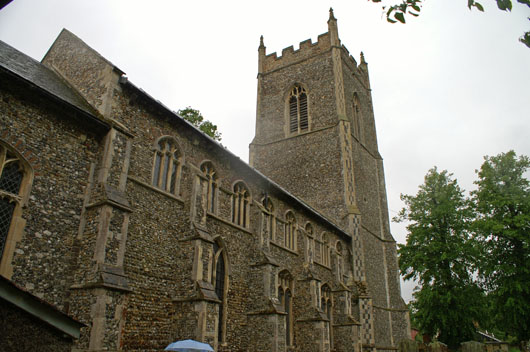|
|
||||||||||||||||||||||||||||||||||||||||||||||||||||||||||
|
Please sign my Guestbook and leave feedback |
||||||||||||||||||||||||||||||||||||||||||||||||||||||||||
|
Recent Additions |
||||||||||||||||||||||||||||||||||||||||||||||||||||||||||
|
|
||||||||||||||||||||||
|
Oberammergau (of Passion Play fame) to replace the originals that were destroyed by the Puritans in 1644. They didn’t destroy the font cover, for which we must all be thankful. The nave and chancel roofs also bear original monograms of Jesus (IHS) and Mary (MR). There are also shields showing emblems of Christ’s passion. There are three mediaeval misericords, All are in good condition, but it must be said that the designs are sedate by misericord standards, and even more so compared with the bench ends. The screen dates from the fifteenth century but the upper part was sliced off by an eighteenth century priest who was apparently irritated that he couldn’t be properly heard by the congregation. This is all the more unfortunate when you consider that it has survived when so many rood screens were destroyed during the Reformation. Externally, the church is like so many in Suffolk faced with flint. The porch which dates from 1475 is very fine indeed with some lovely flushwork (patterns formed from alternating flint and dressed stone) that is also typical of Suffolk. Around the base is a plinth with flushwork shields. The spandrels above the door have rather weathered carvings of a dragon and what appears to be his hunter. The walls are very attractive with lovely clean lines, marred somewhat perhaps by the intrusive buttresses. In truth, however, Ufford is not important architecturally and its undoubted quality is overshadowed by the wood carving for which it is renowned. |
 |
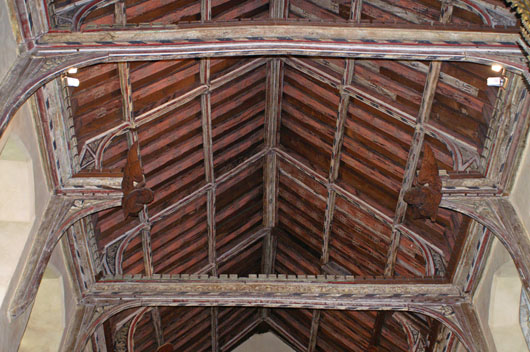 |
|
Left: Looking towards the chancel. We can glimpse the glories of the chancel roof. Note the top beam of the rood screen remains forlornly in-situ following the depredations of the octogenarian priest. Right: A Section of the nave roof with tie-beams alternating with hammer beams. |
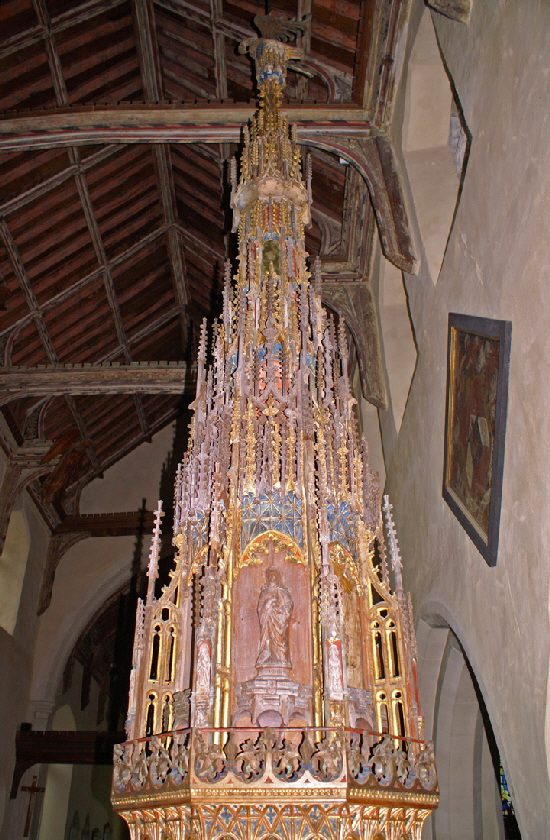 |
 |
|||||||||||||||||||||||||||||||||||||||||||||||||||||||
|
Left: The extraordinary font cover. Right: One of the lower panels of the font cover. |
||||||||||||||||||||||||||||||||||||||||||||||||||||||||
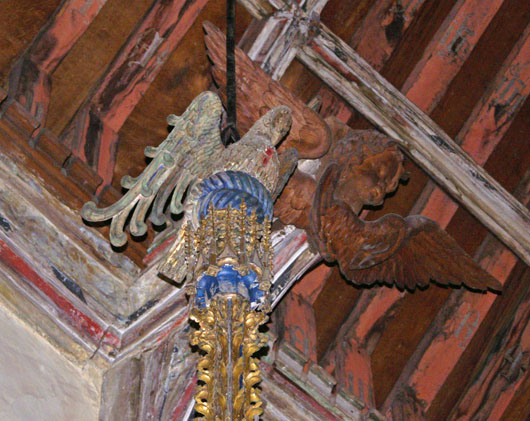 |
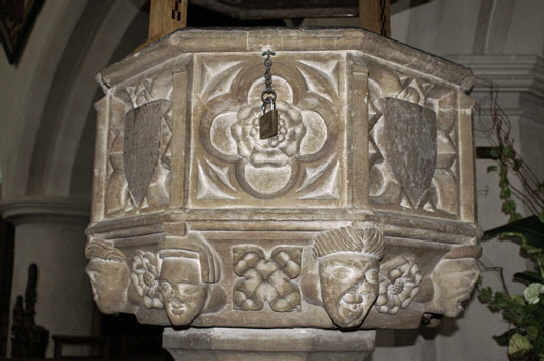 |
|||||||||||||||||||||||||||||||||||||||||||||||||||||||
|
Left: The Pelican in her Piety atop the font cover. It was a ubiquitous favourite of the mediaeval carpenters, especially in Suffolk and especially atop font covers. Note the blood on the mother’s breast by which she feeds her chicks in an act of self-sacrifice. In the background is one of the angel roof carvings. Right: The octagonal font does not perhaps, deserve the glories which surmount it. Note - unusually - a modern padlock attached to the staple above it. In mediaeval days all fonts were given a lockable wooden cover to prevent the stealing of holy water for witchcraft and necromancy.. The hasps were normally fitted to the rim of the bowl. This hasp looks modern so I don’t know why it is here. |
||||||||||||||||||||||||||||||||||||||||||||||||||||||||
 |
||||||||||||||||||||||||||||||||||||||||||||||||||||||||
|
Pictured from from the chancel, over the remains of a rood screen, we can see the angel roof. Angel roofs are a speciality of Suffolk and Cambridgeshire but these angels are unusual in that they project upright from the ends of the beams rather than being part of the beams themselves. These, hpwever. are mid seventeenth century replacements from Oberammegau for those destroyed by the Puritans. |
||||||||||||||||||||||||||||||||||||||||||||||||||||||||
|
The Bench Ends |
||||||||||||||||||||||||||||||||||||||||||||||||||||||||
 |
||||||||||||||||||||||||||||||||||||||||||||||||||||||||
 |
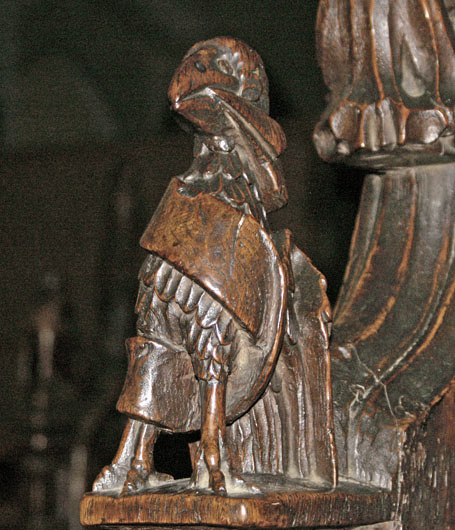 |
|||||||||||||||||||||||||||||||||||||||||||||||||||||||
|
Left: On the left is St Catherine with her wheel. On the right is St Margaret. This, generally accepted as the pick of the bench ends was displayed in the Tate Gallery’s “Gothic” exhibition. Wonderful hair! Centre: What is this creature with his enormous tongue reaching the ground? He also seems to have wings and fetching curls! Right: This looks like some sort of fabulous dragon, seemingly with a garment of some sort wrapped around him from his beak-like mouth downwards. |
||||||||||||||||||||||||||||||||||||||||||||||||||||||||
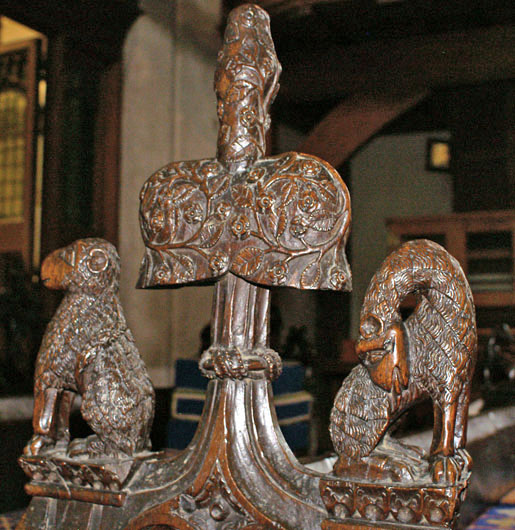 |
||||||||||||||||||||||||||||||||||||||||||||||||||||||||
 |
||||||||||||||||||||||||||||||||||||||||||||||||||||||||
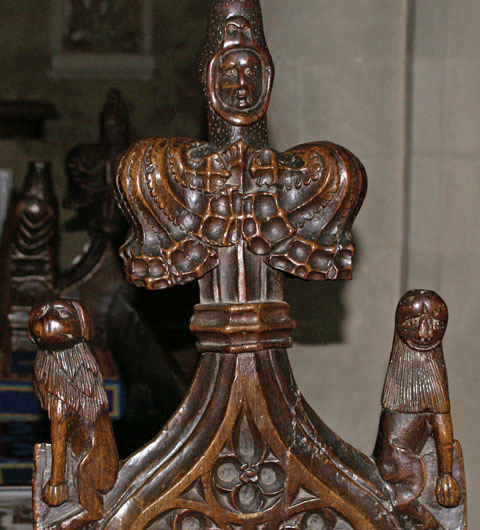 |
||||||||||||||||||||||||||||||||||||||||||||||||||||||||
|
Left: Monkeys? I don’t think they can be meerkats....Note the face at the top of the “poppy head”. Centre: Another fabulous beastie. This one, with his fashionable collar, appears to have lost his lower jaw. He has magnificent ears, to be sure! Right: These two appear to have shaggy coats. Is the one on the right having a wash? |
||||||||||||||||||||||||||||||||||||||||||||||||||||||||
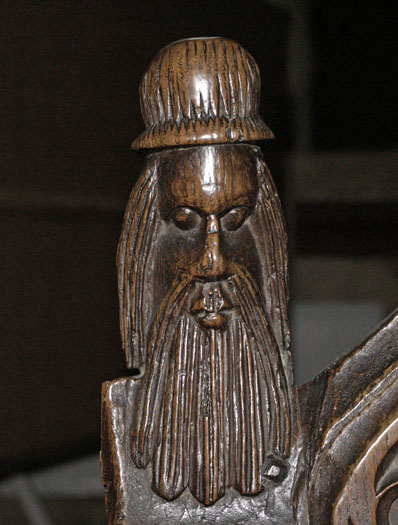 |
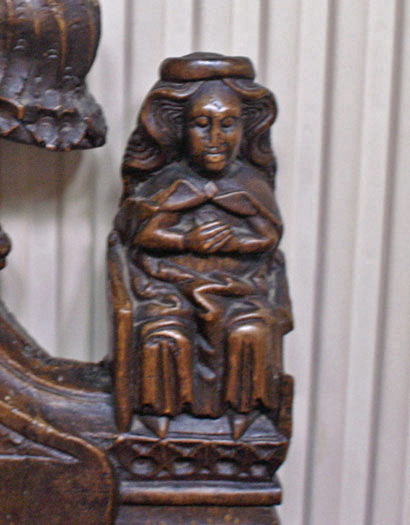 |
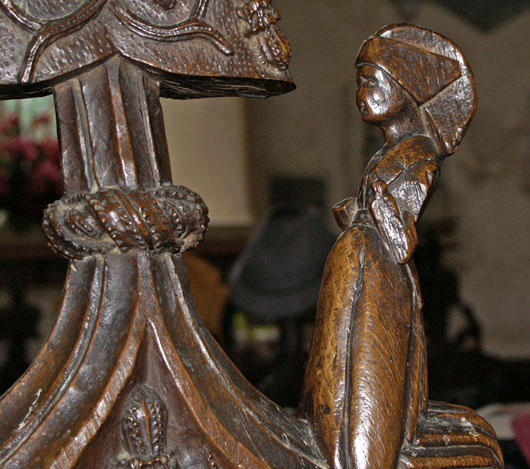 |
||||||||||||||||||||||||||||||||||||||||||||||||||||||
|
Left: This bearded chap is wearing a fetching bowler hat, which must have been quite a sensation at the time. Centre: “No, I said... and then she said...ooh, I said, go on...” Right: The lady in the “butterfly headdress”. |
||||||||||||||||||||||||||||||||||||||||||||||||||||||||
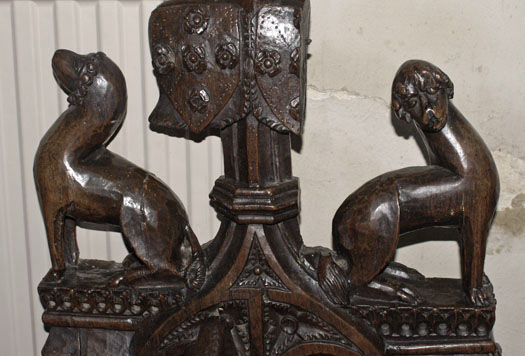 |
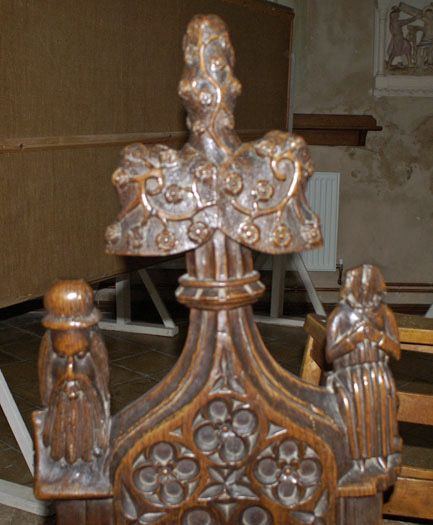 |
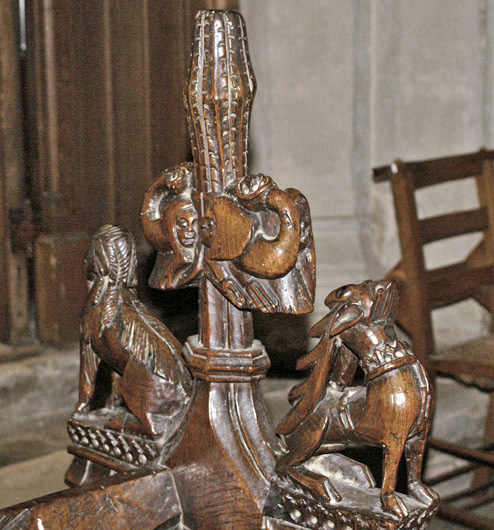 |
||||||||||||||||||||||||||||||||||||||||||||||||||||||
|
Left: These two are presumably related. The shield on the poppy head has been damaged, sadly. Centre: The old man in his bowler hat with a defaced female companion. Right: The right hand figure is shown in close up above. Note, however, the wonderful figures on the poppy head. Jesters? |
||||||||||||||||||||||||||||||||||||||||||||||||||||||||
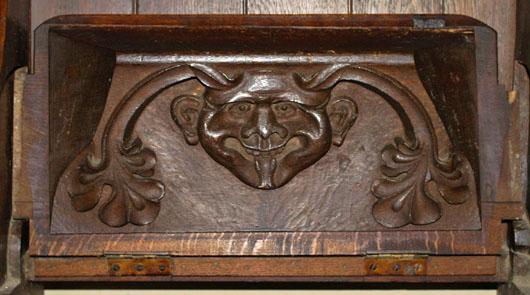 |
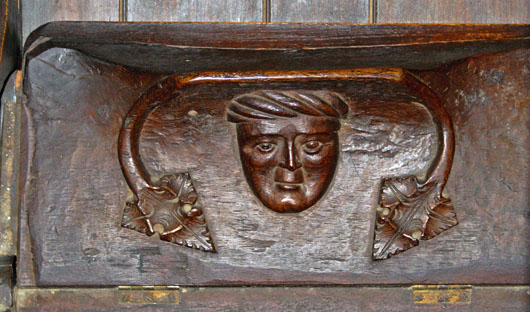 |
|||||||||||||||||||||||||||||||||||||||||||||||||||||||
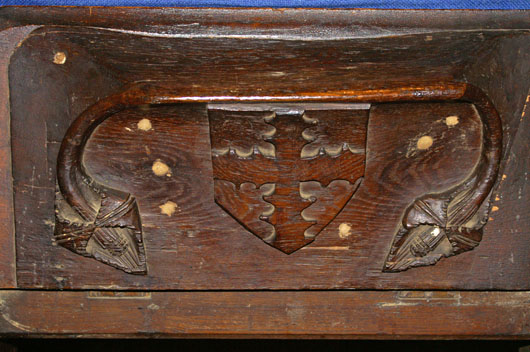 |
 |
|||||||||||||||||||||||||||||||||||||||||||||||||||||||
|
Misericords were the artistic playground of the mediaeval carver and the Ufford ones are very restrained - in stark contrast to the lunacy of the bench ends! The arms (lower left) are of the de Ufford family and so it seems likely that the three are in their original home and were ot moved in from some disestablished monastery. Lower Right: The paintednave ceiling with symbols of the apostles. |
||||||||||||||||||||||||||||||||||||||||||||||||||||||||
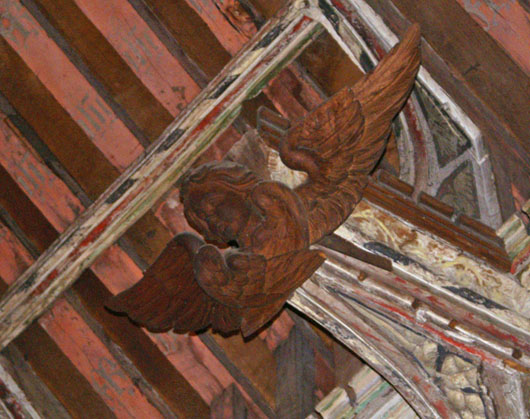 |
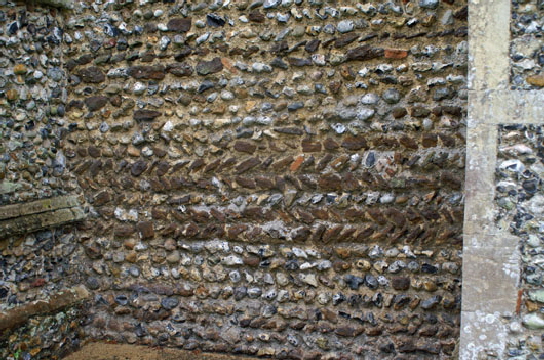 |
|||||||||||||||||||||||||||||||||||||||||||||||||||||||
|
Left: One of the Oberammergau angels in the nave. Right: Herringbone masonry in the west part of the nave wall gives the only real evidence that the church fabric probably dates from the last eleventh century. |
||||||||||||||||||||||||||||||||||||||||||||||||||||||||
 |
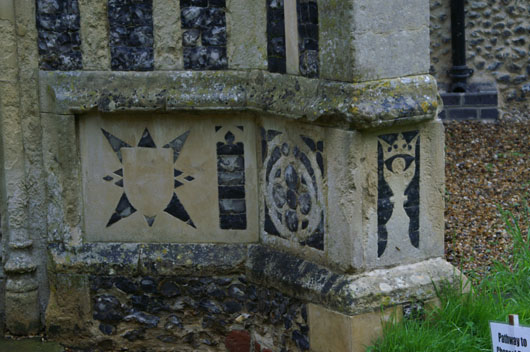 |
|||||||||||||||||||||||||||||||||||||||||||||||||||||||
|
Left: The lovely south porch with a superb display of Suffolk flushwork. Right: Close-up of flushwork on the porch plinth. |
||||||||||||||||||||||||||||||||||||||||||||||||||||||||
